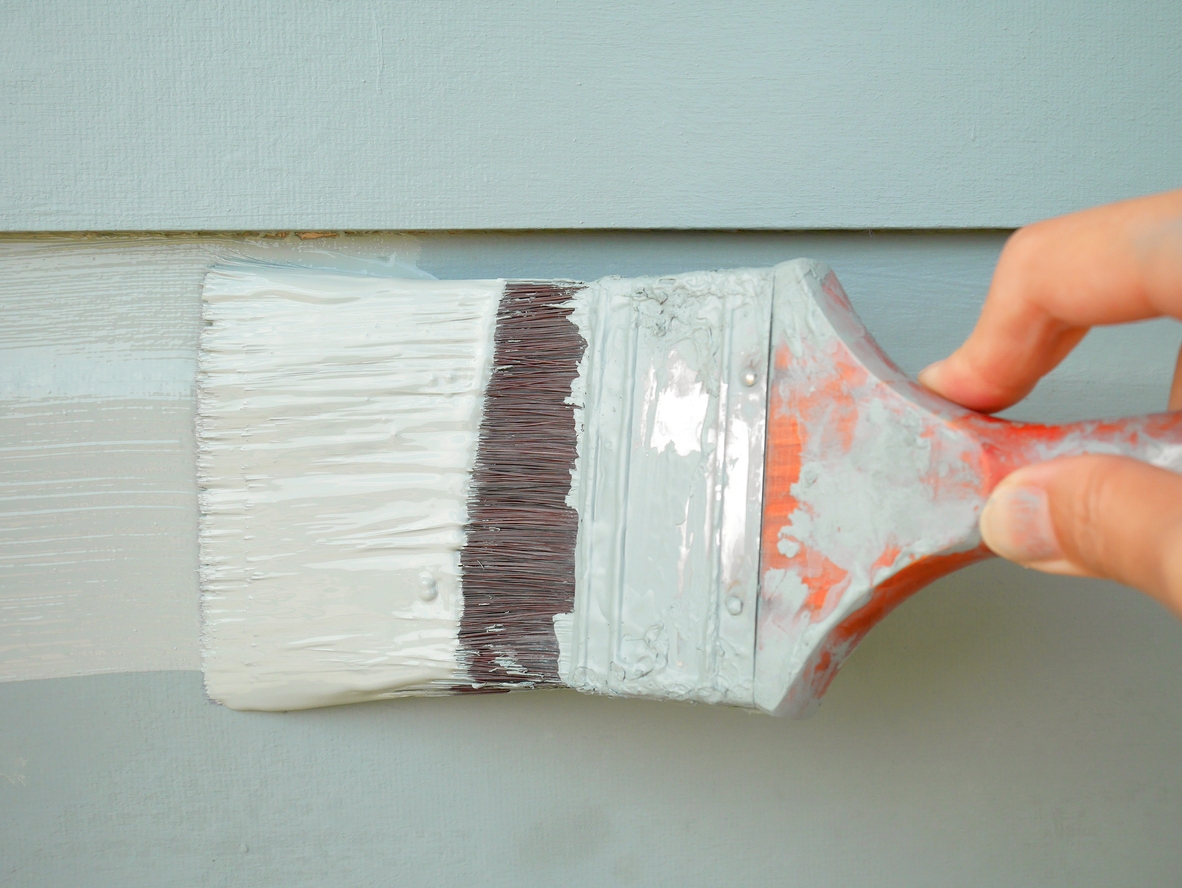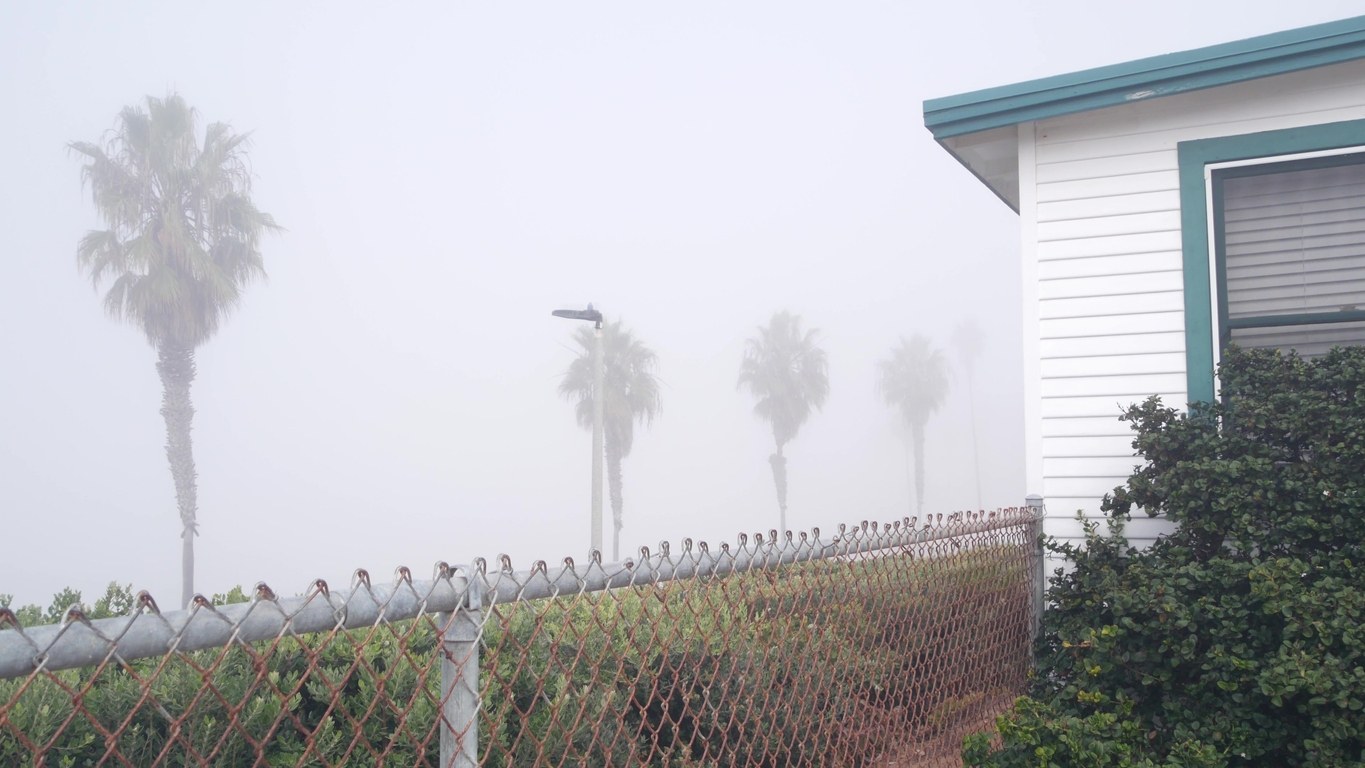Painting your home outside during the cold weather is not generally encouraged. But if maintenance is urgent despite the frigid outdoor temperatures, consider certain crucial factors to ensure your exterior paint job goes as smoothly as possible.
Painting in cold weather, especially when temperatures fall below 50°F, poses significant challenges. Freezing temperatures can prevent paint from drying and curing properly, leading to uneven coverage, cracking, or peeling. Temperature is crucial in painting because it affects how paint adheres to surfaces and how well it forms a durable finish.
Understanding the risks, such as poor adhesion and extended drying times, is essential to avoid compromised results and ensure a smooth, long-lasting finish when painting in cooler conditions.
Impact of cold temperatures on paint drying and curing
Cold temperatures can significantly affect paint drying and curing processes:
- Slower drying time: Cold temperatures slow the evaporation of solvents or water in the paint, leading to extended drying times. This situation can delay project completion and cause issues with adhesion, as the paint may remain tacky longer and be vulnerable to dust or debris sticking to the surface.
- Delayed curing: Drying is the surface-level evaporation of moisture while curing refers to the hardening of the paint through chemical reactions. Cold weather slows the curing process, which is crucial for the paint’s long-term durability and strength.
- Incomplete curing: If the paint doesn’t fully cure in low temperatures, it can result in a weaker surface. This incomplete curing makes the paint more prone to cracking, chipping, and peeling, reducing its lifespan and requiring potential rework.
Paint consistency and application issues
In cold weather, the paint thickens, thus making it difficult to apply smoothly. It leads to uneven texture and streaks, as the thicker paint is more challenging to spread uniformly across surfaces. Colder temperatures also prevent the paint from leveling out properly, leading to increased brush and roller marks, which can compromise the finish.
Adhesion problems in cold weather
In cold weather, paint adhesion can be problematic due to a few key factors:
- Poor adhesion to surfaces: Cold temperatures cause surfaces to contract and retain moisture, preventing paint from properly bonding, especially on porous or previously painted surfaces.
- Peeling and flaking: Poor adhesion can lead to long-term damage, with paint more likely to peel, flake, or bubble as it struggles to form a strong bond.
- Impact on primer: Cold weather can also weaken primer performance, affecting its bonding strength and leading to issues with the topcoat, such as uneven coverage or durability.
Increased risk of moisture issues
When painting in environments prone to cold temperatures and humidity, moisture issues can become a significant problem.
- Condensation and dew: Cold temperatures mixed with humidity can cause condensation on surfaces, leading to trapped moisture under the paint, which can cause peeling or blistering.
- Blistering and bubbling: Moisture trapped beneath the paint film leads to bubbles or blisters, which eventually crack or peel, damaging the finish.
- Frost and ice: Freezing temperatures and frost prevent paint from adhering properly, compromising the paint’s durability and causing issues like flaking or cracking.
Weather-related paint failures
Weather-related paint failures, particularly those related to cold temperatures, can significantly affect the longevity and appearance of exterior and interior paint jobs.
- Cracking and brittle paint: Cold temperatures can cause paint to become brittle and crack, especially if it has not been completely cured before the temperature drops. When paint is applied in cold weather, it struggles to bond correctly, leading to premature cracking as it becomes rigid.
- Fading and chalking: In cold weather, the paint may not cure as intended, leading to improper adhesion and reduced durability. This results in fading or chalking, where the paint loses its color and becomes powdery over time.
- Excessive touch-ups or repainting: Cold-weather issues often result in more frequent touch-ups or complete repainting, as the improper application can cause early damage, requiring maintenance to restore the finish.
The importance of surface preparation in cold weather
Surface preparation is critical for ensuring a quality paint job, and cold weather presents unique challenges that can compromise the process. Take a look at how cold temperatures specifically affect surface cleanliness, surface temperature, and priming:
- Surface cleanliness: Cold temperatures can cause moisture to remain on surfaces, preventing proper cleaning and drying, which leads to poor adhesion and potential paint failure.
- Temperature of the surface: Even if the air is slightly warmer, cold surfaces below 50°F can still cause adhesion problems, as the paint may not bond well or cure properly.
- Priming in cold conditions: Primers not designed for low temperatures can struggle to adhere, further complicating the application and durability of the final coat.
Choosing the right paint for the cold weather
When it comes to painting in cold weather, several factors play a role in ensuring the success of your project, including choosing the right paint and following best practices for application. The list below further discusses cold-weather paint formulations, the differences between latex and oil-based paints, and the importance of following manufacturer guidelines.
- Cold-weather paint formulations: Some paints are specially designed for cold-weather application, allowing them to be applied at temperatures as low as 35°F (1.7°C). These formulations contain additives that improve adhesion and curing time, ensuring better results even in cooler climates, which is ideal for extending the painting season into late fall or early spring.
- Latex vs. oil-based paints: Latex paints (water-based) tend to be more sensitive to temperature drops because cold weather slows down drying and curing, leading to poor adhesion and potential cracking. Oil-based paints, which dry through oxidation, are more resilient in colder temperatures. However, cold-weather latex alternatives exist and are often preferred due to easier cleanup and environmental benefits.
- Manufacturer guidelines: When applying paint in cold weather, follow the manufacturer’s recommended temperature ranges. These guidelines help ensure proper drying and long-lasting results, avoiding common issues like cracking, peeling, or improper curing due to low temperatures.
Timing the paint project
When planning a painting project, particularly for outdoor spaces, timing ensures a successful and durable finish. Here is how to consider weather and temperature factors for the best results:
- Monitoring weather conditions: Monitor the weather to ensure temperatures are ideal for paint adhesion. Even in colder seasons, aim to paint during the warmest part of the day to maximize drying time.
- Day-night temperature swings: Rapid drops in temperature overnight can cause paint to dry improperly, leading to cracking or poor adhesion if it has not fully cured by day’s end.
- Postponing during extreme cold: If temperatures are consistently too low, it’s best to delay the project. Painting in cold conditions can result in long-term damage, like peeling or reduced durability.
Professional solutions for cold-weather painting
- Use of heaters or temporary enclosures: Professional painters often use heaters or build temporary enclosures around the work area to maintain a stable temperature, ensuring that paint dries properly even in cold weather.
- Experience with cold-weather techniques: Professionals select the correct cold-weather paints and additives and apply techniques like thinner coats and extended drying times to mitigate the challenges of painting in low temperatures.
- Cold-weather project planning: Working with experienced painters ensures better scheduling to avoid extreme cold, allowing for strategic project timing and preparation to minimize cold-related issues like slow drying or improper adhesion.
Long-term effects of painting in cold weather
Painting in cold weather can have serious long-term consequences that affect both the quality of the work and the property itself. Here’s how:
- Premature paint failure: Painting in cold weather can cause poor paint adhesion, leading to issues like cracking, peeling, or blistering. It can result in the need for costly repairs or repainting much sooner than expected.
- Wasted materials and time: Rushing a project in cold temperatures often leads to poor-quality results, wasting both materials and time. Rework becomes necessary, which increases overall project costs.
- Impact on property value: A high-quality paint job enhances a property’s curb appeal and structural integrity. Cold-weather painting failures can diminish the exterior appearance and lower property value due to visible wear or damage.
Parting words
Painting below 50°F can lead to significant problems, including slow drying times, poor adhesion, and increased risk of cracking or peeling. Cold weather affects the paint’s ability to cure correctly, resulting in uneven finishes and potential long-term failures, such as bubbling or flaking.
For expert advice and cold-weather painting solutions that ensure a lasting finish, contact Custom Painting, Inc. today for professional guidance and services. Call us today at 925-866-9610 or fill out our online form for a free quote.



